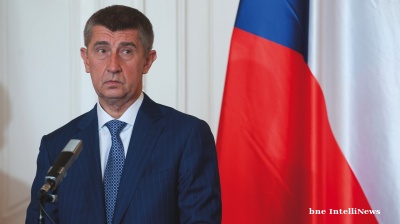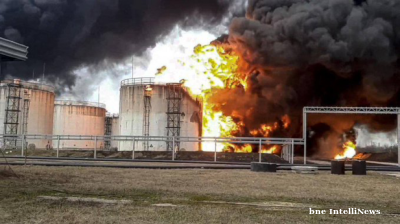Neighbours Zambia and Zimbabwe in the common Southern African Development Community (SADC) marked milestones this summer, as they continued jointly to struggle with half-day power outages from low water dam levels with prolonged drought compromising a rebound in Victoria Falls tourism.
Lusaka, in its third year of Eurobond default, finally reached a bilateral creditor deal under the flailing G20 official-private comprehensive framework, with China owed $4bn of the $6bn total, signing on alongside the Paris Club of Western creditors.
Harare, ahead of August 23 elections pitting incumbent President Emmerson Mnangagwa against main opposition party leader Nelson Chamisa of the Citizens Coalition for Change (CCC), was forced to align the official exchange rate then down 80% against the US dollar through a more market-based system, where the local unit quickly headed to 5,000 versus the black market 7,500 quote. Business transactions were already 80% in greenbacks. Zimbabwe’s Finance Minister Mthuli Ncube, a former Oxford University professor and African Development Bank (AfDB) chief economist, urged the move as a ruling Zanu-PF party stalwart after President Mnangagwa’s railings against speculation proved unavailing.
Zambia’s debt breakthrough, meanwhile, propelled Eurobonds to a mid-50s price, while kwacha/government bond return and the local stock index were both at the front of the frontier market pack with around 20% gains in the first half. Zimbabwe remains on MSCI’s frontier stock gauge despite foreign exchange controls as a stand-alone market, and was off 25% for the period, while the local index was up almost 800% in Zimbabwean dollar terms as a lone hedge against 175% inflation. Market capitalization has halved to $2bn in the past decade, with $500,000 in daily trading, and 15% foreign participation mainly from South Africa and Europe with US sanctions still in place after two decades.
Unlike Lusaka, Harare has no near-term viable escape from over $15bn in accumulated arrears to bilateral and multilateral creditors and can only qualify for a no-credit staff-monitored program with the International Monetary Fund (IMF). Real per capita income is lower in hard currency terms than at 1980 independence, and political and economic pariah status will be renewed under another Mnangagwa term even though informal voter surveys overwhelmingly favour the challenger with a 10-point 48-38% margin in a July poll.
Zambia struck a multi-year $1.3bn standard IMF arrangement over nine months ago, but the first $200mn chunk was contingent on the official debt workout coordinated through co-chairs France and China. President Hakainde Hichilema has moved forward with core fiscal elements shrinking fuel and farmer subsidies to trim the chronic 5% deficit, at the cost of higher inflation which hit 10%. The central bank first raised bank reserve requirements, and then finally lifted the policy rate to 9.5% in May.
The IMF’s first review will revise original macroeconomy assumptions regarding Zambia, most notably on the current account which has tumbled into a 2% deficit this year from a previous surplus as copper exports slip from 3% to 2% of GDP amid global price volatility. Basic parameters hold with growth around 3%, inflation expected to fall to single digits, public debt/GDP over 100%, and $3bn in international reserves. An important structural goal is the overhaul of the debt management system to better track obligations and devise a medium-term strategy.
When President Hichilema took office one year after Eurobond default, outstanding government and government-guaranteed liabilities had yet to be fully reconciled. Over successive administrations, the country had a poor track record of compiling and validating claims, as illustrated in a distressed fund sovereign lawsuit in London 15 years ago that became a political controversy over “vulture” investors, but cited IMF and World Bank documents attesting to deficiencies.
Zambia’s debt agreement was the highlight of the Global Financing New Direction summit that French President Macron hosted in June and served in part to redeem the traditional Paris Club’s reputation while inviting non-members like China to align treatment. A major theme of the gathering was mobilizing climate finance, and debt-for-nature swaps remain on the table alongside the conventional rescheduling agreed to in principle, which must be supplemented with individual country understandings.
The total $6.5bn amount was central government and state electricity company debt, and $2bn lower than the previous tabulation as Chinese insurance agency and state bank lines were reclassified as commercial. Maturities were stretched over 20 years with a 3-year grace period, and the interest rate is 1% until 2038-43 when it rises to 2.5%. By comparison, Chinese loans averaged 4%, and in part to satisfy their aversion to deep losses, the structure provides for a reset at the 4% rate should the IMF and World Bank in 2026 determine improvement in debt carrying capacity as measured by their internal policy and institutional (CPIA) score. The bottom line is an estimated 40% reduction in net present value to $4.5bn, and commercial creditors are expected under longstanding practice to offer comparable respite as those negotiations begin.
Eurobond holders have $500mn in unpaid interest along with the $3bn in default over the past three years and sell-side research has spun out numerous scenarios to match the 40% hit. Consensus envisions a one-third principal haircut, 5% coupon, and 10-year maturity lengthen for fair current value in the low 50s, around market price. Leading creditors have come to the table after signing non-disclosure agreements which will restrict trading during talks and remain adamant that the 50% NPV reduction presented in the IMF’s preliminary debt sustainability assessment is too extreme.
Poor country advocacy groups on the other hand insist on this outcome as the difference between for-profit and development lending, setting the stage for an acrimonious process. From the outset, local government bonds were excluded from restructuring for fears of banking system impairment, in contrast with Ghana where a domestic swap was the first stage. Foreign investors own around $2bn of local debt and Eurobond holders insist they should share the pain. The debate will continue although the former argue they are already under strain from a 5% cap imposed on auction participation, and a new law allowing citizens 20% withdrawal from state pension funds with one-third of portfolios in Treasury bills.
In Zimbabwe, the IMF puts unfunded liabilities on top of official arrears at another $6bn, including $3bn promised to white farmers for land confiscation that was originally to be repaid through a bond issue. The government has resorted to a spectrum of orthodox and innovative tools to attempt to quell hyperinflation and salvage the local currency, but economic mismanagement remains on full display despite President Mnangagwa’s business-friendly self-description.
The central bank of Zimbabwe in early June raised the benchmark rate 10 basis points to 150%, and in a nod to its big commodity export, it has issued both physical gold coins and digitally backed tokens to divert greenback demand. Foreign exchange is first confiscated one-quarter from exporters, and then completely liquidated if it stays in bank accounts for three months, before regime cronies can sell the proceeds at market rates for a windfall. Corruption is as rampant as in the notorious Mugabe era. The Al-Jazeera media network exposed a gold smuggling and money laundering ring of ruling party allies that included a Kenya exile from the decades-ago Goldenberg scandal.
President Mnangagwa’s government has unveiled fanciful schemes to attract mainstream foreign investors, including the new US dollar–quoted Victoria Falls Stock Exchange (VFEX) as the fulcrum of a future offshore financial hub. It has attracted ten listings from the original bourse with $1bn in capitalization after two years, with plans for cross-trading with regional counterparts and a diaspora bond never realized.
A billionaire in the United Arab Emirates has a vision for a state-of-the-art cyber city called Mount Hampden around the capital, and reportedly plunked down $500mn already with no visible footprint. Harare’s main international financiers are historic allies China and Russia, providing generous terms in exchange for natural resource extraction and military cooperation. Chinese partnership dominates the lithium industry, where royalties are now half paid in product-given currency transaction bottlenecks. Moscow delivered twenty helicopters costing $300mn in May ostensibly for tourism and medical use that could also be deployed for security purposes, with only disclosed $500mn in foreign exchange reserves.
While Zambia has the outlines of a new debt beginning, its neighbour has yet to begin to dig out from political and financial choices that have isolated it from global capital markets and its own people, with over half according to surveys believing the election will again be rigged just like the currency game.
– Gary Kleiman, senior partner, Kleiman International Consultants, Inc.
Opinion

IMF: Global economic outlook shows modest change amid policy shifts and complex forces
Dialing down uncertainty, reducing vulnerabilities, and investing in innovation can help deliver durable economic gains.

COMMENT: China’s new export controls are narrower than first appears
A closer inspection suggests that the scope of China’s new controls on rare earths is narrower than many had initially feared. But they still give officials plenty of leverage over global supply chains, according to Capital Economics.

BEYOND THE BOSPORUS: Consumed by the Donald Trump Gaza Show? You’d do well to remember the Erdogan Episode
Nature of Turkey-US relations has become transparent under an American president who doesn’t deign to care what people think.

COMMENT: ANO’s election win to see looser Czech fiscal policy, firmer monetary stance
The victory of the populist, eurosceptic ANO party in Czechia’s parliamentary election on October 6 will likely usher in a looser fiscal stance that supports growth and reinforces the Czech National Bank’s recent hawkish shift.




